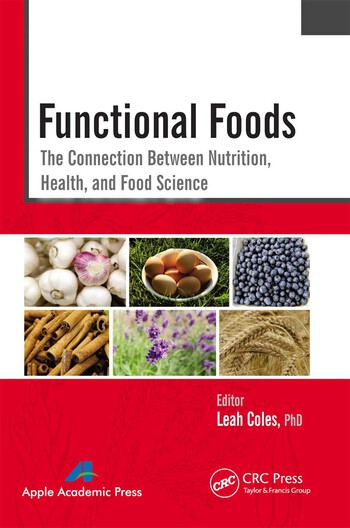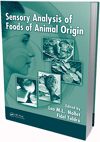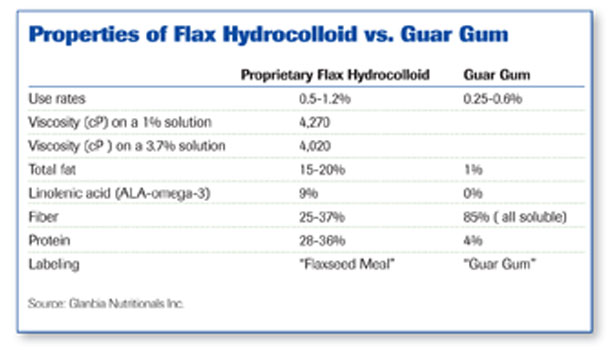Stabilization and Formulation Science








Formulating Healthier Foods Using Pulse Ingredients
The word ‘’pulse’’ is derived from the Latin words puls or pultis, meaning thick soup, and includes lentils, peas, chickpeas and beans.
Tanya Der, manager of Food Innovation & Marketing at Pulse Canada, provided an overview of the many uses of legumes (pulses) at Prepared Foods’ R&D Seminars-Chicago in her seminar titled, “Opportunities for Formulating Healthier Foods Using Pulse Ingredients.” She noted that Canada is a major producer and exporter of pulses globally, with production increasing over 500% between 1990-2010.
Pulses are a very high source of dietary fiber (14-25% dry weight) and are a quality protein source at about 20-30% dry weight. Pulses are high in lysine and low in methionine and cysteine, while cereal grains are typically low in lysine but high in methionine and cysteine. The complementary effect of the amino acids makes these protein sources a complete protein. As an example, combining yellow peas with a PDCAAS of 0.64 and wheat flour at 0.43 can, at a 30:70 ratio, result in an elevated PDCAAS of 0.75.
Clinical studies demonstrate favorable effects of pulses on several parameters related to cardiovascular disease. Regular consumption of pulses can reduce blood levels of total cholesterol and low-density lipoprotein cholesterol, two major risk factors for cardiovascular disease. The range of beneficial nutrients in pulses includes total and soluble fiber, folate, and antioxidants (tannins, flavonoids) and other phytochemicals—all of which may contribute to lowering the risk for cardiovascular diseases.
For diabetic control, pulses possess a low glycemic index (GI), with resistant and slowly digestible starches contributing to glucose management. Further, pulses contribute satiety to the diet, and an inverse relationship between consumption and the risk for obesity has been reported.
Increased innovation in the use of pulses in food products has resulted in the development of new formulations geared towards improving nutritional profiles. As an example, Der reported that processing of pasta containing chickpea flour at a 30% inclusion results in a product of optimal flavor and texture attributes.
In addition, the protein quality of wheat pastas (100% durum wheat) is improved with the addition of 25% lentil flour. Overall protein quality increased 25% from 11.7 to 14.7 and PDCAAS from 0.43 to 0.71—thus allowing a “good source of protein” label claim and a 100% increase in fiber content.
Health benefits of pulse ingredients are also being tested when processed into commercial food products. Studies of noodles formulated with coarsely and finely ground pulse flours (navy bean, yellow pea, green lentil) conducted by Glycemic Index Laboratories (2011) found that all pulse flour noodles maintained a low GI compared to white bread.
Research has shown that pulses can also be used effectively as a binder in meat. Adding up to 12% lentil flour in beef burgers increased cook yield. Heat treatment of lentil binder reduced burger off-flavor. Pulses can be used in such applications to reduce formulation cost; increase sensory quality; and reduce fat content by 50%, offering the potential to increase shelf-stability and achieve gluten-free status.
Pea fractions have been tested as 100% replacement of corn starch and wheat flour in coated meat products, including chicken and fish nuggets, and chicken breast. Use of pea fractions led to increased cook-yield and batter pick-up; lower oil absorption; crispier and more golden color; improved freeze-thaw stress; and improved retention of quality during extended period under heat lamps.
Pulse ingredients tested in yogurt production at 1-3% as a carbohydrate source were reported by Der and resulted in increased acidification rates during fermentation, and produced a product with decreased syneresis, while not affecting pH level. Further, the viability and stability of L. rhamnosus was comparable to or higher than control after 0 and 28 days storage.
Pulses and their fractions are gaining in popularity, as they offer a “clean” label; are non-GMO and gluten-free; and have low allergenicity. The range of new formulations support Der’s conclusion that “pulses (can be) great on your plate.”
“Opportunities for Formulating Healthier Foods Using Pulse Ingredients,” Tanya Der, manager of food innovation and marketing, Pulse Canada, 204-925-3783, tder@
pulsecanada.com, www.pulsecanada.com
—Summary by Kelley Fitzpatrick, NutraSolutions Content Editor
New Substitute for Guar Gum
A new alternative to guar gum, a galactomannan polysaccharide derived from guar beans, was profiled by Marilyn Stieve, business development manager for flax-based ingredients at Glanbia Nutritionals in her Prepared Foods’ R&D Seminar titled “Flax Seed-based Hydrocolloid—A New Substitute for Guar Gum.”
Because of its chemical characteristics, guar gum is used in foods to impart a number of important functional attributes, including to create texture and gels; add mouthfeel and impart richness; improve volume and crumb structure; and act as a shelflife extender. Other key properties include freeze-thaw prevention, particle suspension and emulsion stabilization.
Guar gum has traditionally been economical, because it has almost eight times the water-thickening potency of an additive (such as cornstarch). Thus, only a small quantity is needed for producing sufficient viscosity. However, the price has increased significantly in the previous 12-18 months due to usage of guar in oil hydraulic fracturing (“fracking”). This has resulted in price volatility.
Glanbia Nutritionals has developed a highly functional hydrocolloid substitute for guar gum made from flax seed that can offer economical benefits over guar. High in fiber (32%) and protein (34%), Stieve noted the ingredient offers excellent moisture migration-control properties and the ability to bind both fat and water—for improved texture and crumb structure, increased volume and extended shelflife. (For the usage profiles of flax hydrocolloid in comparison to guar gum, see chart “Properties of Glanbia Flax Hydrocolloid vs. Guar Gum.”)
A number of case studies were described by Stieve which support the use of the novel flax hydrocolloid in breads and sweet baked goods, bagels, bakery mixes, breading and batters, pancakes and waffles, fillings and toppings, and sauces and dressings. For example, the inclusion of 0.5% flax seed hydrocolloid resulted in a white bread that maintained softness throughout its shelflife and a whole-wheat bread with improved softness in comparison to guar gum.
Commercial chicken batter with the addition of 0.55% flax seed hydrocolloid was compared with that prepared with 0.06 percent xanthan gum. Stieve reported that batter pick-up and post-fry weights were similar between the two systems. Further, total fat absorption was lower with flax hydrocolloid. The addition of the flax hydrocolloid (0.75%) was also shown to increase cake volume and moistness in comparison to 0.25% guar gum, when added to a commercial mix. Sensory attributes were equivalent.
Flax hydrocolloid at a level of 0.60% resulted in high-quality pancakes that remained intact even after microwaving for 1:30 seconds and syrup addition (20g). White flour tortillas made with 0.7% flax seed hydrocolloid showed comparable measures of texture and extensibility measure throughout their shelflife as tortillas made with 0.5% guar gum. In addition, Stieve showed that 51% whole-wheat pizza-crust dough made with 0.9% flax hydrocolloid had similar diameter, thickness and sensory characteristics as dough made with 0.5% guar gum.
Glanbia’s extensive research has shown their proprietary flax hydrocolloid offers equivalent functionality as guar and xanthan gum and gum Arabic in several food systems. These functional benefits are derived synergistically from protein, fiber and gum mucilage—constituents which also add significant nutritional properties. In addition, flax contains antioxidants and lignans, and its fiber yields a low glycemic index. The product is hypoallergenic, non-GMO, and free of cholesterol, gluten, lactose and trans fat.
“Flax Seed-based Hydrocolloid—A New Substitute for Guar Gum,” Marilyn Stieve,business development manager-flax, Glanbia Nutritionals Inc., 262-292-8156, mstieve@glanbia.com, www.glanbianutritionals.com
—Summary by Kelley Fitzpatrick, NutraSolutions Content Editor
Replacing Guar Gum: An Exercise in Product Development
Demand for guar gum has increased from 250,000MT to 480,000MT over the last 24 months due to energy industry pressures. Even though the largest crop in history was harvested at 450,000MT, the supply shortage and price increases have manufacturers looking to change to alternate hydrocolloids, such as carboxymethylcellulose (CMC), xanthan gum and galactomannans. Purchase decisions include waiting out the market fluctuations of supply vs. demand or seeking alternative ingredients to replace the stability and texture attributes provided by guar gum.
The first step to replacement of guar gum is to understand its functionality. Guar gum is a polydispersible, all-natural, cold water-soluble gum with a slow hydration rate and a high relative viscosity. It binds water, provides freeze-thaw stability and has been historically economical. There is no known direct replacement, but alternative ingredients can be selected based on the end-application and may include xanthan gum, CMC, tara gum or konjac gum.
According to Maureen Akins, technology manager, Business Development, at TIC Gums, in an R&D Seminar titled “Replacing Guar Gum: An Exercise in Product Development with Ingredients in Short Supply,” different hydrocolloids have varying hydration rates, affecting viscosity or thickening rate.
“Xanthan gum, with its cellulose backbone and trisaccharide side chains, is the most tolerant gum to pH, alcohol, salt and heat. Xanthan works synergistically with other ingredients and is cold water-soluble,” she stated. CMC is an excellent film-former, available in a wide range of viscosities and molecular weights, and is cold water-soluble. Tara gum has a structure and functionality somewhere between that of guar and locust bean gums. It is mostly cold water-soluble but requires 180˚F for full activation. Konjac is a mannose/glucose 2:1, is cold water-soluble and synergistic with xanthan to form gels.
“In answer to developers’ needs, alternative hydrocolloid blends have been created for replacement of guar gum,” added Akins. Combinations of CMC and xanthan at different ratios can provide standard or lower guar viscosities in products, while a blend of CMC and guar works specifically for beverages. During product design, important texture attributes need to be defined; then the texture system can be formulated and the finished product validated with consumers.
When discussing texture with consumers, terms have been developed based on distinct physical behavior in the mouth. Types of texture attributes include visual, mechanical and oral, and are the basis of “texture mapping.”
Texture mapping is important to product development and includes several guidelines:
1.) Compare two samples with only the stabilizer or texturizer changed.
2.) Rank samples high, medium or low, relative to each other.
3.) Determine if selected attributes are important.
For example, when looking at texture in two cornbread samples, attributes compared included surface irregularity, crumb structure, friability, denseness, moistness of mass and mouth-clearing. For iced tea, the texture map looks at particulates, thickness, slickness, astringency and mouth-clearing. For tomato soup, attributes may include surface film, particulates, mouth-coating, slipperiness and pulpiness.
In conclusion, Akins reinforces the need for a strategy to replace guar gum by understanding its functions in each specific system. She also recommends the use of texture mapping as a guideline for product reformulation.
“Replacing Guar Gum: An Exercise in Product Development with Ingredients in Short Supply,” Maureen Akins, technology manager, Business Development, at TIC Gums, www.ticgums.com
—Summary by Elizabeth Pelofske, Contributing Editor
Acacia Gum: A Versatile Soluble Fiber
Acacia gum is a low-viscosity, all-natural fiber that is non-hygroscopic and stable to a wide pH range of 2.5-8.0. Acacia gum is highly soluble at room temperature and exhibits high stability with most processing conditions. Compatible with other ingredients, acacia gum has good acceptance with no flavor or color impact in most applications.
Ester Cejudo, executive account manager at Nexira Inc., in the seminar, “Acacia Gum: A Versatile Soluble Fiber—Nutritional Benefits and Technical Advantages,” explains: “Acacia gum has a very high digestive tolerance as a healthy soluble fiber. It is a highly branched molecule that is difficult to hydrolyze, but exhibits complete, while slow, fermentation.”
Acacia gum’s nutritional properties are supported by more than 80 in vitro and in vivo clinical studies. It is synergistic with probiotics, improving the survival and growth rate of live cultures. As a gut regulator, acacia gum improves digestive balance, as well as enhances water and electrolyte absorption.
Low calorie at 1.7Kcal per gram, acacia gum is non-cariogenic with beneficial properties in dental care. In foods, it reduces glycemic index and positively impacts the GI in baked goods, while promoting certain sensory advantages.
Shelflife studies in chocolate chip cookies evaluated during a 28-day shelflife revealed that maximum benefits, including a softer bite and being less crumbly, were achieved at 3% acacia gum. Chocolate chip muffins with 0 and 1% acacia gum were evaluated during a nine-day period measuring the force with a texturometer. The muffin with acacia gum showed similar volume and a softer bite than the control. The force required to compress the muffins decreased with acacia gum. This softness in the muffin was also perceived by a taste panel as “freshness.”
Two important applications for acacia gum are cereals and extruded snacks. In cereal bars, it helps to reduce sugar, thanks to its exceptional binding properties. Cereal and nutritional bars can improve their texture and nutritional profile with added fiber and reduced calories. Furthermore, acacia gum extends shelflife due to its moisture-stability properties. This also helps to increase bowl-life in breakfast cereals and improve crispiness in all type of flakes and extruded snacks.
Acacia gum is beneficial in beverages and liquid foods. It is tasteless, odorless, colorless, non-thickening and non-gelling, while acting as a natural emulsifier. It enhances flavor release, and improves roundness and mouthfeel.
Acacia gum can be dry- or wet-blended, with no temperature requirement for activation. There is rapid dispersion, beneficial in instantized products. It also is great for use in functional foods. It can be easily introduced into a variety of foods to obtain a fiber claim, without changing their taste or texture and providing a broad range of advantages, such as invisible mouthfeel in sugar-free drinks.
In ice creams and desserts, acacia gum reduces ice crystal formation. It improves the freeze-thaw behavior; maintains a smooth texture; and helps reduce fat. pf
“Acacia Gum: A Versatile Soluble Fiber—Nutritional Benefits and Technical Advantages,” Ester Cejudo, executive account manager, Nexira Inc., 908-704-7484, e.cejudo@nexira.com, www.nexira.com
—Summary by Elizabeth Pelofske, Contributing Editor
Looking for a reprint of this article?
From high-res PDFs to custom plaques, order your copy today!











